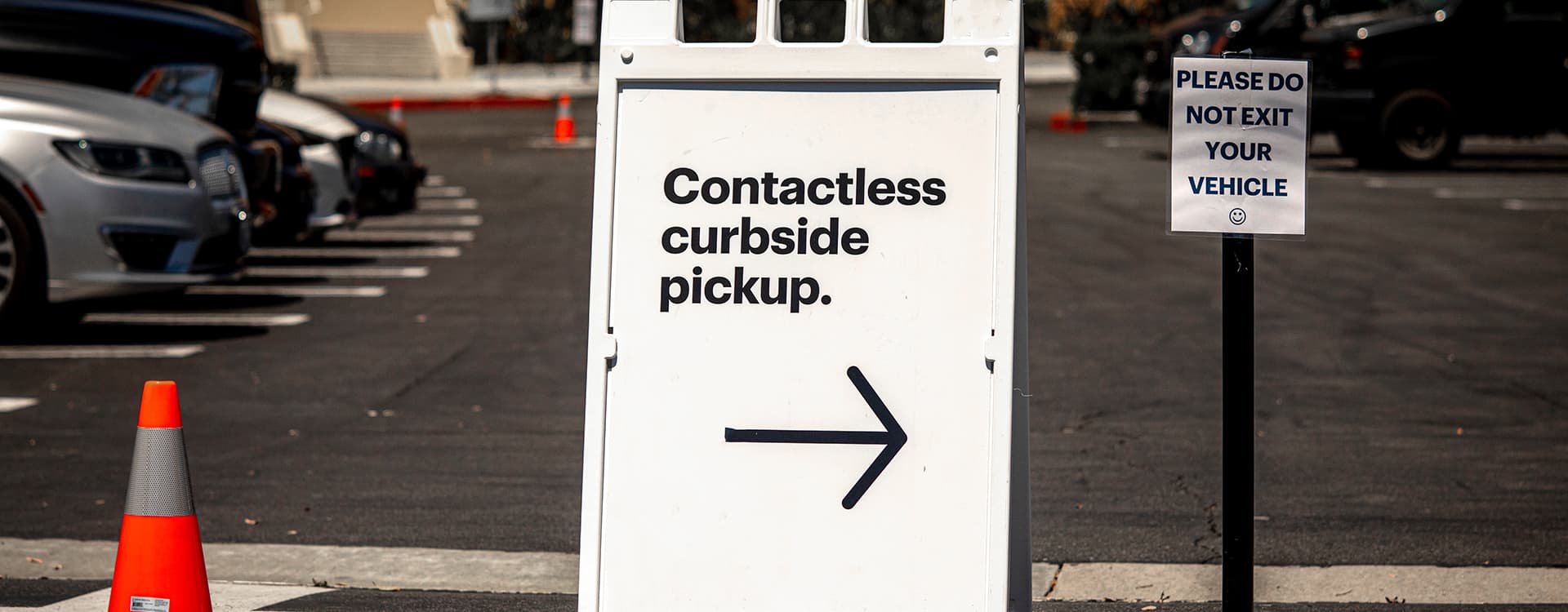Omnichannel Fulfillment A Win-Win For Retailers and Consumers
Need to Know
- Consumer behaviour shifted drastically in the midst of the pandemic, and omnichannel fulfillment options that became popular during that time are now the standard
- Omnichannel fulfillment is popular with consumers, as it minimizes or eliminates shipping and return costs and simplifies exchanges
- It’s also a win-win for customers and retailers, as it creates a low-hassle shopping experience and opportunities for additional sales
During the pandemic, eCommerce retail sales made through the “buy online, pickup in-store” method (BOPIS) soared by almost 107%[1], and its popularity is here to stay. According to Statista, BOPIS sales are projected to maintain an annual growth rate of approximately 15%.
With perks like reduced shipping costs and simplified returns, omnichannel retail solutions have become extremely popular with consumers. In fact, they’re 20% more likely [2] to buy from retailers that offer omnichannel fulfillment than those that don’t.
But the benefits don’t end there. For retailers, omnichannel fulfillment is a way to bridge the gap between their online and in-store experiences, driving traffic to brick-and-mortar locations and creating new opportunities for associates to upsell and cross-sell. It’s also a powerful way for retailers to set themselves apart from online-only eCommerce stores.
Read on to learn more about omnichannel fulfillment solutions, their benefits, and where to start with your own implementation.
What is omnichannel fulfillment?
Omnichannel fulfillment is a marketing and sales strategy that combines the best aspects of offline and eCommerce shopping for more flexibility and better customer experiences. The approach involves aligning user experiences across a variety of touchpoints, including physical stores, online platforms, and mobile devices.
Omnichannel fulfillment solutions include:
BOPIS, also known as buy online pickup in-store and click and collect. Allows customers to browse, choose, and pay for items online, then pick up their order at a retail location rather than having it sent to their home.
BOSS, which stands for buy online ship to store and allows customers to access inventory beyond their local stores, saving on shipping costs while expanding their product selection.
BORIS, or buy online return in-store. This option eliminates the need for customers to spend time shipping their orders back to a retailer and incurring carrier fees. Instead, the customer can make their return at the store of their choice, saving time and enabling a faster refund. As for the retailer, returning the item to stock is almost immediate, accelerating the pace of resale.
Curbside pickup for online orders. Once the retailer confirms their order is ready, customers go to their selected retail location and notify the staff of their arrival via a website or app. An associate then brings the order out to them.
Why an omnichannel retail strategy is a win-win for retailers and shoppers
Pre-pandemic, many retailers were already taking steps to offer omnichannel fulfillment options. But the realities of lockdown initiated a rapid transformation of the retail landscape.
During the first wave, in-store sales dropped almost 70% [3], while online sales practically doubled. Retailers without an online presence focused their efforts on enabling eCommerce sales, and brands that were already available online invested in technologies that would expand their omnichannel capabilities.
This accelerated evolution on the retail side of the equation was mirrored by changing consumer behaviour and consumption patterns in response to legislation aimed at curbing the spread of COVID-19.
Today, market research indicates that these changes in shopping behaviour will continue to persist as ingrained consumer attitudes and values.
Which is great news for retailers.
Omnichannel fulfillment solutions give retailers with brick-and-mortar locations a leg-up on online-only merchants, allowing them to provide a more fulsome shopping experience.
When a customer visits a physical location, front-line staff have the opportunity to engage with them in a way that is not well supported by online properties, with more personalization or white-glove service. This also creates openings for additional sales, with BOPIS orders having on average a 10-20% cross-sell rate [4].
Additionally, both BOPIS and BORIS save on shipping costs when the opportunity doesn't exist to pass them on to the consumer.
There are also a number of benefits for eCommerce customers.
Omnichannel fulfillment solutions combine the access and convenience of online purchasing with a streamlined version of traditional offline shopping that minimizes time spent browsing and waiting in line.
They also eliminate the costs of carrier shipping and return fees, lowering the overall cost of online orders for consumers.
The faster turnaround on receiving their orders is another plus: in fact, 67% of customers that use BOPIS [5] will add additional items to their cart when they know they can pick them up immediately.
Speed is also a factor when it comes to returns. About 20-30% of online orders are returned [6], and remotely processing refunds can be a logistical challenge for retailers and consumers. Giving customers the opportunity to immediately exchange their items or get a refund removes many of these roadblocks on both sides of the retail experience.
Where to start with your omnichannel upgrade
When it comes time to roll out in-store pickup options for your own retail business, the requirements for success generally fall into one of two buckets: customer experience and operations.
To properly implement in-store pickup options, retailers should have:
- At least one physical retail location
- A robust eCommerce experience
- Accurate inventory data accessible to relevant business systems
- Locations system with accurate multi-source inventory data
- Integration between their inventory source of truth (for example, an ERP, POS, or OMS) and eCommerce experience
- Integration between their order management source of truth and eCommerce experience
- Post-purchase communication workflows with timely notifications and clear instructions (for example, where to go, when to go there, a designated pick-up spot, and "I'm here" functionality)
- Well-trained staff in physical locations with access to relevant data via in-store systems
- Strategic on-site merchandising
No matter where you are in your omnichannel journey, it’s worth going the extra mile to bridge the gap between your in-store and eCommerce sales. But that doesn’t mean you have to do it alone. Our Northern experts are here to help you with your implementation.
We’ve assisted many of our clients with their omnichannel retail strategy, and as a result, they have seen significant adoption from their customers. Contact us using the form linked below to get started.
References
[1] https://whiplash.com/blog/buy-online-pickup-in-store
[2] https://business.adobe.com/blog/how-to/attract-and-retain-shoppers-with…
[3] https://cmoinsider.pl/en/new-patterns-of-consumer-behaviour-bopis-boris…
[4] https://www.onestock-retail.com/en/blog/omnichannel-solution-bopis-bori…
[5] https://www.icsc.com/news-and-views/icsc-exchange/icsc-finds-over-half-…
[6] https://www.onestock-retail.com/en/blog/omnichannel-solution-bopis-boris
Stay informed, sign up for our newsletter.

